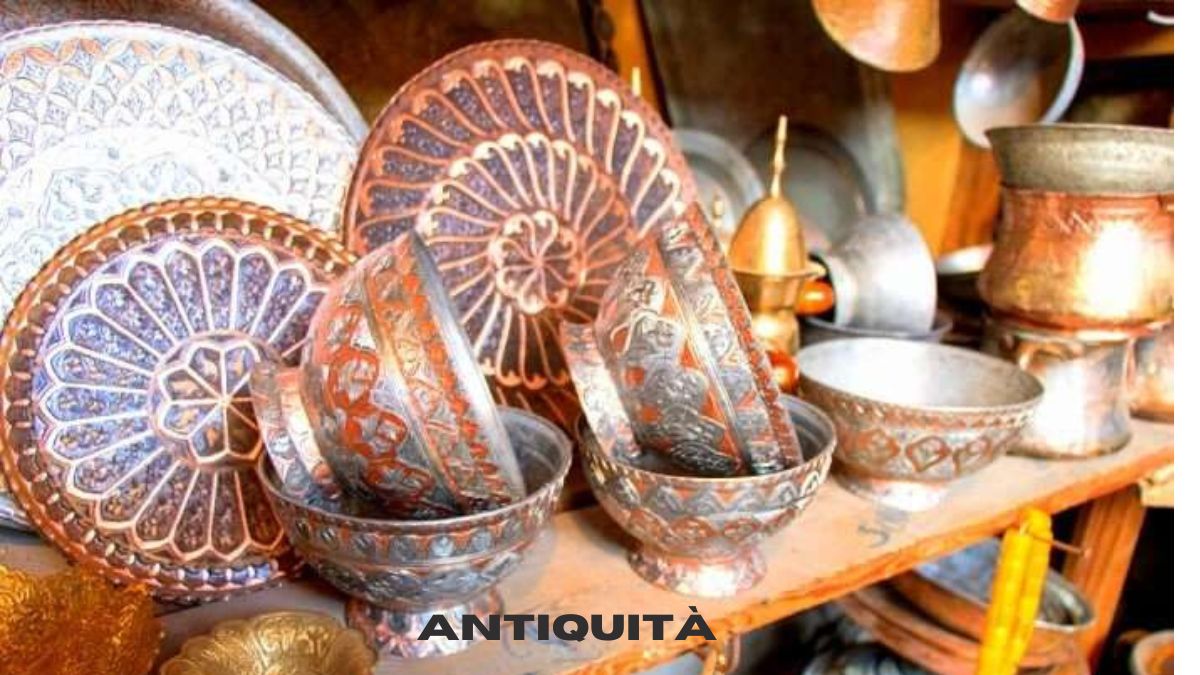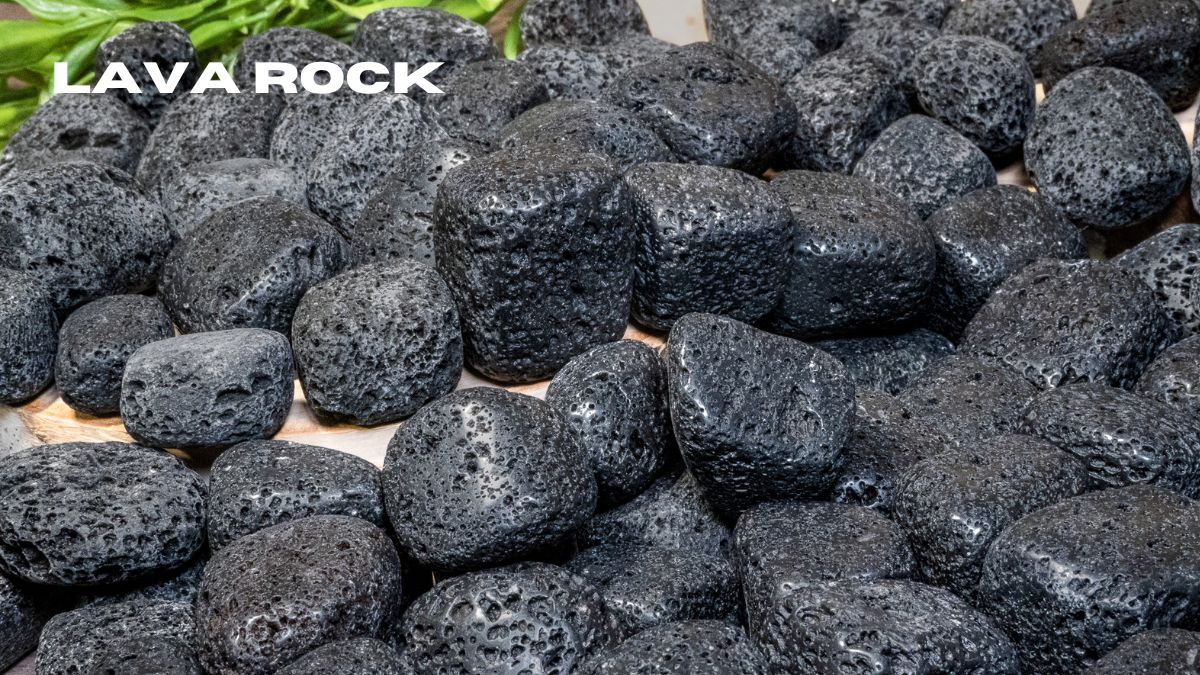Topic
The Health and Wellness Benefits of Rooibos Tea

Rooibos tea, also known as red bush tea, is a herbal infusion that has gained popularity worldwide for its exceptional health benefits and delightful taste. Originating from South Africa, this caffeine-free beverage is renowned for its rich antioxidant content and diverse range of flavors. Let’s delve deeper into the world of rooibos tea and uncover its remarkable properties.
What is Rooibos Tea?
Rooibos tea is derived from the leaves of the Aspalathus linearis plant, native to the Cederberg region of South Africa. Unlike traditional tea, which comes from the Camellia sinensis plant, rooibos tea is naturally caffeine-free, making it an ideal choice for those seeking a soothing and calming beverage without the stimulating effects of caffeine.
Origins of Rooibos Tea
The history of rooibos tea dates back centuries, with indigenous Khoisan tribes of South Africa being the first to discover its medicinal properties. Traditionally, the leaves of the rooibos plant were harvested, fermented, and brewed into a fragrant infusion that was prized for its therapeutic effects. Over time, rooibos tea gained popularity beyond South Africa’s borders, becoming a cherished beverage enjoyed by people around the globe.
Health Benefits of Rooibos Tea
Antioxidant Properties
Rooibos tea is packed with powerful antioxidants, such as aspalathin and quercetin, which help combat oxidative stress and reduce inflammation in the body. These antioxidants play a crucial role in protecting cells from damage caused by harmful free radicals, thereby promoting overall health and well-being.
Potential Cancer Prevention
Studies suggest that the polyphenols found in rooibos tea may possess anti-cancer properties, making it a potential ally in the fight against cancer. Research has shown that these compounds may inhibit the growth of cancer cells and help prevent the formation of tumors, although more studies are needed to confirm these findings definitively.
Improving Heart Health
Regular consumption of rooibos tea has been associated with a reduced risk of cardiovascular diseases, including heart attacks and strokes. The antioxidants present in rooibos tea help lower blood pressure, improve blood circulation, and reduce cholesterol levels, thereby supporting heart health and reducing the risk of cardiovascular complications.
Managing Diabetes
Rooibos tea may also aid in managing diabetes by helping regulate blood sugar levels. Some studies have shown that rooibos tea can improve insulin sensitivity and glucose uptake in cells, which may help prevent spikes in blood sugar levels and reduce the risk of complications associated with diabetes.
Rooibo’s Tea Varieties
Rooibos tea is available in several varieties, each offering its own unique flavor profile and health benefits. The three main types of rooibos tea are:
Traditional Rooibos
Traditional rooibo’s tea undergoes a fermentation process that gives it a rich, earthy flavor with subtle hints of sweetness. It is the most common variety of rooibo’s tea and is widely enjoyed for its robust taste and therapeutic properties.
Green Rooibos
Rooibos tea is made from unfermented rooibo’s leaves, resulting in a lighter brew with a fresher taste and higher antioxidant content. Green rooibo’s tea is prized for its crisp flavor and delicate aroma, making it a refreshing choice for tea enthusiasts.
Red Rooibos
Rooibos tea is similar to traditional rooibo’s tea but undergoes a longer fermentation process, resulting in a deeper red hue and a more pronounced flavor. Red rooibos tea has a slightly sweeter taste than traditional rooibos tea and is often enjoyed on its own or with a splash of milk or honey.
How to Prepare Rooibo’s Tea
Brewing rooibo’s tea is simple and straightforward, allowing you to enjoy its delicious flavor and health benefits with ease. Here’s how to prepare the perfect cup of rooibos tea:
- Brewing Methods: Start by boiling water and pouring it over rooibo’s tea leaves or tea bags in a teapot or cup.
- Serving Suggestions: Allow the tea to steep for 5-7 minutes to extract the full flavor and health benefits. You can enjoy rooibo’s tea hot or cold, plain or with added sweeteners such as honey or lemon.
Rooibo’s Tea and Skin Care
In addition to its internal health benefits, rooibo’s tea offers numerous advantages for skin health and beauty. Its anti-inflammatory and antioxidant properties make it a popular ingredient in skincare products designed to treat various skin conditions and promote a radiant complexion.
Treating Skin Conditions
Rooibo’s tea is effective in soothing and alleviating various skin conditions, including eczema, acne, and psoriasis. Its anti-inflammatory properties help reduce redness and irritation, while its antioxidant content promotes healing and repair of damaged skin cells.
Enhancing Skin Health
Regular consumption of rooibo’s tea can also contribute to overall skin health and vitality. The antioxidants in rooibo’s tea help protect the skin from environmental damage caused by UV radiation and pollution, resulting in a clearer, more youthful complexion.
Rooibo’s Tea and Weight Management
For those looking to maintain a healthy weight, rooibo’s tea can be a valuable addition to their diet and lifestyle. Its natural appetite suppressant properties help curb cravings and reduce calorie intake, while its ability to boost metabolism enhances fat burning and promotes weight loss.
Appetite Suppressant Properties
Rooibos tea contains compounds that help regulate hunger hormones and increase feelings of fullness, making it easier to control portion sizes and avoid overeating. Incorporating rooibos tea into your daily routine can help support your weight loss goals and promote long-term success.
Boosting Metabolism
In addition to curbing appetite, rooibo’s tea can also boost metabolism, leading to increased calorie expenditure and enhanced fat burning. By drinking rooibo’s tea regularly, you can stimulate your body’s natural fat-burning processes and accelerate weight loss in a healthy and sustainable manner.
Rooibo’s Tea and Digestive Health
Rooibo’s tea has been traditionally used to soothe digestive discomfort and promote gastrointestinal health. Its anti-inflammatory and antispasmodic properties make it effective in relieving symptoms of indigestion, bloating, and constipation.
Relieving Digestive Issues
Drinking rooibo’s tea can help calm an upset stomach and alleviate symptoms of digestive distress. Its gentle nature makes it suitable for individuals with sensitive stomachs or digestive disorders, providing relief without causing further irritation.
Soothing Stomach Discomfort
Rooibo’s’ tea acts as a natural digestive aid, helping to regulate bowel movements and promote regularity. Its mild laxative properties encourage healthy digestion and prevent constipation, ensuring optimal gastrointestinal function and overall well-being.
Sustainability and Rooibo’s Tea Production
As demand for rooibo’s tea continues to grow, ensuring the sustainability of its production becomes increasingly important. Sustainable practices, such as organic farming methods and fair-trade certification. Help protect the environment and support local communities involved in rooibos cultivation.
Environmental Impact
Rooibos cultivation relies on sustainable farming practices that minimize environmental impact and preserve natural ecosystems. By avoiding the use of synthetic pesticides and fertilizers. Rooibos farmers can maintain soil health and biodiversity while ensuring the long-term sustainability of their crops.
Fair Trade Practices
Supporting fair trade rooibos ensures that farmers receive fair wages and working conditions. Empowering them to improve their livelihoods and invest in their communities. Fair trade certification guarantees transparency and accountability throughout the supply chain, allowing consumers to make ethical choices and support sustainable agriculture.
Conclusion
Rooibo tea offers a multitude of health benefits, ranging from antioxidant protection to weight management and digestive support. Its delicious flavor and versatility make it a popular choice for tea enthusiasts seeking a caffeine-free alternative with exceptional taste and therapeutic properties. By incorporating rooibo tea into your daily routine, you can enjoy its numerous health benefits and promote overall well-being.
Topic
Antiquità: Preserving the Treasures of the Past

Antiquità, often referred to as artifacts or relics, are objects or structures that have survived from ancient times, offering valuable insights into past civilizations. From ancient pottery and coins to grand architectural ruins, antiquities hold a significant place in human history and cultural heritage.
Introduction to Antiquità
Antiquities encompass a wide range of objects and structures from ancient civilizations, spanning various periods and cultures. These artifacts provide tangible links to our past, offering clues about the lives, beliefs, and achievements of our ancestors. They are vital in understanding the evolution of human society and culture.
Types of Antiquities
Antiquities come in diverse forms, including artifacts such as tools, weapons, and artworks; coins used for trade and commerce; pottery used for domestic and ceremonial purposes; and architectural remnants such as temples, palaces, and tombs.
The Value of Antiquities
Antiquities hold immense value on multiple fronts. They offer invaluable insights into historical events, technological advancements, and cultural practices of ancient civilizations. Moreover, they serve as tangible connections to our heritage, fostering a sense of identity and belonging among communities. Additionally, some antiquities hold considerable monetary value, attracting collectors and investors.
The Importance of Preserving Antiquities
Preserving antiquities is crucial for safeguarding our cultural heritage for future generations. By protecting these artifacts and structures, we can maintain a tangible link to our past and ensure that the lessons and achievements of ancient civilizations are not lost to time.
Challenges in Preserving Antiquities
Despite their importance, antiquities face numerous threats, including theft, illegal trade, natural disasters, and environmental degradation. The illicit trade in antiquities not only robs countries of their cultural heritage but also fuels organized crime and terrorism.
Efforts in Antiquities Preservation
Various initiatives and organizations are dedicated to the preservation of antiquities. UNESCO’s World Heritage Sites program recognizes and protects sites of outstanding universal value, while governments enact laws and regulations to combat the illicit trade in antiquities. Public awareness campaigns and educational programs also play a crucial role in fostering appreciation for antiquities and promoting their preservation.
The Role of Technology in Antiquities Preservation
Advancements in technology have revolutionized the field of antiquities preservation. Digital techniques such as 3D scanning and printing allow for the creation of precise replicas, enabling researchers to study and analyze artifacts without risking damage to the originals. Geographic Information Systems (GIS) facilitate the mapping and documentation of archaeological sites, aiding in their conservation and management.
Case Studies in Antiquities Preservation
Numerous restoration projects, museums, and cultural institutions around the world are dedicated to the preservation and display of antiquities. From the restoration of ancient ruins to the curation of archaeological collections, these efforts ensure that antiquities are safeguarded and accessible to the public.
Conclusion
Antiquità serve as tangible links to our past, offering invaluable insights into the diverse cultures and civilizations that preceded us. By preserving these artifacts and structures, we can honor our shared heritage and ensure that the legacy of past generations endures for future ones to appreciate and learn from.
Topic
The Marvels of Lava Rock: Nature’s Versatile Gift

Lava rock, with their rugged beauty and diverse applications, have captivated human imagination for centuries. From their formation deep within the Earth to their myriad uses in everyday life, these volcanic marvels hold a special place in geology and culture alike.
Formation of Lava Rocks
Lava rocks, also known as volcanic rocks, are born from the fiery depths of volcanic eruptions. When molten lava cools rapidly upon exposure to the Earth’s surface or water, it solidifies into various types of volcanic rock.
Types of Lava Rocks
Basalt
Basalt, the most common type of lava rock, boasts a dense composition and typically appears black or dark gray in color. Its fine-grained texture and durability make it a popular choice for construction materials and decorative purposes.
Obsidian
Obsidian, often referred to as volcanic glass, forms when lava cools rapidly with minimal crystal growth. This results in a smooth, shiny appearance, ranging from black to brown and even translucent hues. Obsidian has historically been prized for its use in tools, weapons, and ornamental objects.
Pumice
Pumice, characterized by its lightweight and porous nature, forms when frothy lava undergoes rapid cooling and solidification. Its high porosity makes it an excellent abrasive material and a popular addition to horticultural soils and skincare products.
Properties and Characteristics
Lava rocks exhibit distinct properties and characteristics that contribute to their versatility and appeal across various industries.
Color and Texture
While basalt typically appears dark due to its high iron content, obsidian can range from jet black to mahogany brown or even exhibit translucent properties. Pumice, on the other hand, is light in color and has a frothy texture due to trapped gas bubbles during its formation.
Porosity
One of the defining features of lava rocks is their porosity, which varies depending on factors such as cooling rate and mineral composition. This porosity allows for efficient water retention in horticultural applications and enhances heat distribution in culinary uses.
Heat Retention
Lava rocks possess exceptional heat retention properties, making them ideal for applications such as grill cooking and landscaping. Their ability to absorb and radiate heat evenly ensures consistent cooking temperatures and promotes plant growth in garden settings.
Common Uses of Lava Rocks
Lava rocks find diverse applications across several industries, owing to their unique properties and aesthetic appeal.
Landscaping
In landscaping, lava rocks are prized for their natural beauty and low maintenance requirements. They serve as decorative mulch, ground cover, and accent pieces in gardens, pathways, and water features, adding texture and contrast to outdoor spaces.
Jewelry Making
Obsidian, with its glossy surface and striking colors, has long been favored by artisans for crafting jewelry and ornamental objects. Its smooth texture and ability to take a high polish make it an attractive choice for statement pieces and spiritual adornments.
Grill Cooking
Lava rocks are commonly used in gas grills to distribute heat evenly and impart smoky flavor to grilled foods. Placing lava rocks above the burner flames ensures consistent cooking temperatures and reduces flare-ups, enhancing the grilling experience for enthusiasts.
Benefits of Lava Rocks
Beyond their aesthetic appeal, lava rocks offer several practical benefits that make them invaluable in various applications.
Natural Aesthetics
The rugged beauty of lava rocks adds a touch of authenticity to landscaping projects and outdoor designs, creating visual interest and harmony with natural surroundings.
Heat Distribution
In grill cooking, lava rocks act as natural heat diffusers, preventing hot spots and ensuring uniform cooking of meats and vegetables. Their ability to absorb and radiate heat evenly results in deliciously seared dishes with enhanced flavor profiles.
Durability
Lava rocks are renowned for their durability and longevity, standing the test of time in both indoor and outdoor settings. Their resistance to weathering, corrosion, and impact makes them a reliable choice for construction materials and decorative accents.
Environmental Impact
While lava rocks offer numerous benefits, it’s essential to consider their environmental impact and sustainability practices.
Sustainability
As natural resources, lava rocks are finite in supply and must be harvested responsibly to preserve geological diversity and ecosystems. Sustainable extraction practices and reclamation efforts help mitigate environmental degradation and protect vulnerable habitats.
Recycling
Recycling initiatives aim to repurpose discarded lava rocks and minimize waste generation in construction and landscaping projects. By crushing and reusing lava rock aggregates, manufacturers reduce the demand for virgin materials and lessen the burden on natural resources.
Tips for Using Lava Rocks
Whether in landscaping or culinary pursuits, maximizing the benefits of lava rocks requires proper care and maintenance.
Cleaning and Maintenance
To prolong the lifespan of lava rocks, regular cleaning and inspection are essential to remove debris and prevent mold or bacterial growth. For grill cooking, periodic brushing and heat treatment help maintain optimal performance and flavor retention.
Safety Precautions
When handling lava rocks, it’s crucial to wear protective gear and exercise caution to avoid injuries from sharp edges or abrasive surfaces. Proper ventilation is also recommended in enclosed spaces to prevent respiratory irritation from dust particles.
Myths and Misconceptions
Despite their widespread use, lava rocks are sometimes shrouded in myths and misconceptions that warrant clarification.
Are Lava Rocks Always Black?
While basalt, the most common lava rock type, tends to be dark in color due to its mineral composition, variations exist within the spectrum of volcanic rocks. Obsidian, for instance, can exhibit hues ranging from black to brown or even translucent shades, depending on its chemical makeup and cooling conditions.
Are They Dangerous?
Contrary to popular belief, lava rocks are not inherently dangerous when used responsibly. While volcanic eruptions can pose hazards to nearby communities, properly cooled lava rocks undergo chemical changes that render them stable and safe for various applications.
Topic
Paradisehill: A Hidden Gem Worth Exploring

Nestled away from the hustle and bustle of urban life lies Paradisehill, a serene destination waiting to be discovered by avid travelers seeking tranquility and natural beauty. Situated in a remote corner of the world, Paradisehill offers a glimpse into untouched landscapes and rich cultural heritage.
History of Paradisehill
The history of Paradisehill dates back centuries, with tales of ancient civilizations and colonial influences shaping its past. From indigenous tribes to colonial settlers, each chapter has contributed to the diverse tapestry of the region, leaving behind remnants of bygone eras waiting to be explored by intrepid adventurers.
Geography and Climate
Paradisehill boasts a diverse geography, ranging from lush forests to pristine beaches and towering mountains. Its tropical climate ensures warm temperatures year-round, making it an ideal destination for sun-seekers and outdoor enthusiasts alike.
Flora and Fauna
The region is home to a plethora of flora and fauna, with dense jungles teeming with exotic wildlife and vibrant flora. From colorful bird species to elusive jungle cats, Paradisehill offers a haven for nature lovers keen on exploring its biodiverse ecosystems.
Tourist Attractions
Natural Attractions
Paradisehill is renowned for its breathtaking natural beauty, with pristine beaches, cascading waterfalls, and majestic mountains awaiting exploration. Whether lounging on sandy shores or embarking on a trek through verdant rainforests. Visitors are spoilt for choice when it comes to experiencing the wonders of nature.
Cultural Attractions
In addition to its natural splendor, Paradisehill boasts a rich cultural heritage, with ancient temples, bustling markets, and vibrant festivals offering a glimpse into the region’s storied past. From ornate shrines to lively street markets, cultural enthusiasts will find themselves immersed in the vibrant tapestry of local life.
Adventure Activities
For adrenaline junkies seeking thrills, Paradisehill offers a myriad of adventure activities, from snorkeling in crystal-clear waters to trekking to hidden waterfalls and zip-lining through lush canopies. With its diverse terrain, the region provides endless opportunities for outdoor adventures.
Cuisine of Paradisehill
No visit to Paradisehill is complete without indulging in its delectable cuisine, which reflects a fusion of indigenous flavors and colonial influences. From fresh seafood delicacies to aromatic spice-infused dishes. The local cuisine tantalizes the taste buds of visitors from around the globe.
Accommodation Options
From luxury resorts overlooking pristine beaches to eco-friendly lodges nestled in the heart of the jungle. Paradisehill offers a range of accommodation options to suit every traveler’s preferences and budget.
Transportation
Getting to Paradisehill is part of the adventure, with options ranging from scenic boat rides along winding rivers to adventurous jungle treks and convenient air travel. Once in the region, visitors can explore its many attractions via local buses, taxis, or rental vehicles.
Sustainable Tourism Initiatives
Paradisehill is committed to preserving its natural beauty and cultural heritage through sustainable tourism initiatives aimed at minimizing environmental impact and empowering local communities. From beach clean-up drives to eco-friendly accommodation options, travelers are encourage to support these initiatives during their visit.
Local Festivals and Events
Throughout the year, Paradisehill comes alive with colorful festivals and events celebrating its cultural diversity and traditions. From lively street parades to traditional dance performances, visitors are invited to immerse themselves in the vibrant festivities and experience the warmth and hospitality of the local community.
Tips for Travelers
Before embarking on a journey to Paradisehill, travelers are advise to pack light. Carry essentials such as sunscreen and insect repellent, and respect local customs and traditions. Additionally, it’s recommended to book accommodations and activities in advance, especially during peak tourist seasons.
Safety and Security
While Paradisehill is generally a safe destination for travelers, it’s important to exercise caution and remain vigilant. Especially when exploring remote areas or participating in adventure activities. Travelers are advise to stay informed about local weather conditions and follow the guidance of experience guides and tour operators.
Conclusion
Paradisehill offers a truly immersive travel experience for those seeking adventure, relaxation, and cultural enrichment. With its pristine landscapes, rich cultural heritage, and warm hospitality, it’s no wonder that Paradisehill remains a hidden gem worth exploring for travelers seeking to escape the ordinary and discover the extraordinary.
-

 Gardening9 months ago
Gardening9 months agoHow to Get Rid of Bugs in Your Bagged Soil (Answered)
-

 Backyard9 months ago
Backyard9 months agoShould You Remove Pine Needles from Under a Tree? (Answered)
-

 Gardening9 months ago
Gardening9 months ago10 Surprising Facts About Greenhouses (How Do Greenhouses Work?)
-

 Backyard9 months ago
Backyard9 months agoHow to Keep Rodents Away from Your Garden Mulch (Answered)
-

 Backyard9 months ago
Backyard9 months agoHow to Use Conifer Clippings as Mulch (Explained)
-

 Gardening9 months ago
Gardening9 months agoTips for Growing Tomatoes in Clay Soil (Important Facts!)
-

 Gardening9 months ago
Gardening9 months agoHow to Stop Grass From Growing Through Mulch (Explained with Examples)
-

 Gardening9 months ago
Gardening9 months agoWhy Seed Scarification is Important (What Is Seed Scarification)
